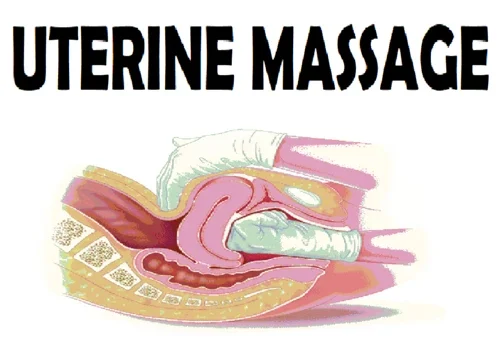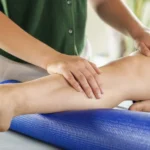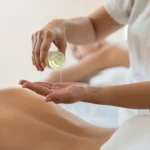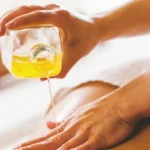Whether you’re recovering from childbirth or simply curious about women’s reproductive health, fundal massage is a practice worth understanding. It might not sound glamorous, but this simple technique can play a crucial role in helping the uterus heal, especially after birth or cesarean section.
In this article, we’ll explore what fundal massage is, why it’s done, what to expect from the process, and how it differs between clinical and home settings. We’ll also touch on its lesser-known uses in holistic care and answer some of the most common questions.
Table of Contents
What is a Fundal Massage?
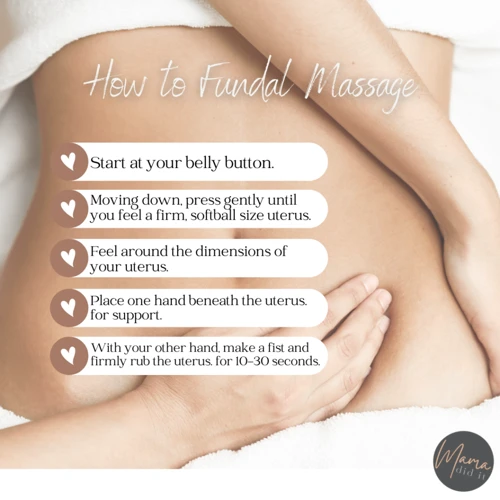
Fundal massage is a hands-on technique that involves applying firm, rhythmic pressure to the fundus, which is the top portion of the uterus. Typically performed by a nurse or midwife after childbirth, this massage helps the uterus contract, reduce bleeding, and return to its pre-pregnancy size.
It’s often done in the hospital setting during the first hours or days postpartum, and while it may feel uncomfortable, it serves a life-saving purpose: preventing postpartum hemorrhage, one of the leading causes of maternal complications after delivery.
Why Is Fundal Massage Done After Birth?
Supporting the Uterus’s Natural Healing
After delivery, your uterus is still expanded and filled with extra blood and tissue. Left to its own devices, it can sometimes struggle to contract — especially if the muscles are tired or overstretched. This is when a boggy fundus (a soft, enlarged uterus) can become a concern.
A fundal massage after birth stimulates uterine muscles to contract. These contractions help:
- Expel any remaining blood clots or tissue
- Prevent excessive bleeding
- Promote faster healing
- Reduce the risk of infection
What About Fundal Massage After a C-Section?
It might surprise you, but fundal massage after a c section is also standard practice. Despite not giving birth vaginally, the uterus still needs help contracting and clearing excess fluid and blood.
Healthcare providers are cautious and gentle — especially considering the surgical wound. But this massage is just as essential for recovery and preventing complications.
👉 Pro Tip: Always let your nurse know if the massage feels too painful. Some discomfort is expected, but it shouldn’t feel unbearable.
What Does a Fundal Massage Feel Like?
To be honest, most people describe fundal massage postpartum as “uncomfortable” — but not unbearable. It feels like someone pressing down firmly on your lower belly, just above the belly button.
The pressure can cause cramping, and if your bladder is full, it can feel even more intense. That’s why nurses usually recommend emptying your bladder before the massage.
The entire process typically takes a few minutes and is repeated several times during your postpartum stay.

Can You Do Fundal Massage at Home?
Here’s where things get interesting: the term “fundal massage” is often used loosely outside medical settings. Some people refer to gentler, at-home uterine or abdominal massages using similar hand placements — but these techniques are not the same as clinical fundal massage.
At-Home Uterine Massage Might:
- Improve menstrual flow
- Reduce period pain
- Support fertility or hormone balance
- Help with pelvic tension
These home massages are gentle, soothing, and never forceful, unlike the post-birth technique used by medical professionals.
If you’re interested in trying this style of massage at home, speak with a pelvic floor therapist or a practitioner trained in abdominal therapy, such as Maya abdominal massage.
How to Perform a Gentle Uterine Massage at Home
⚠️ Note: This is not a substitute for fundal massage immediately after childbirth. If you’ve recently given birth, always follow your healthcare provider’s instructions.
To try a gentle at-home massage:
- Find a calm space and lie on your back with knees bent.
- Warm your hands and apply a small amount of oil or lotion.
- Place your hands just above your pubic bone.
- Gently massage in small, circular motions up toward the belly button.
- Continue for 5–10 minutes, focusing on relaxation and breath.
How Often Is Fundal Massage Done After Birth?
In the hospital, fundal massage is usually performed:
- Immediately after the placenta is delivered
- Every 15 minutes during the first hour postpartum
- Then periodically throughout the first 24 hours
- Less frequently in the days that follow, depending on your recovery
If your uterus is firm and bleeding is minimal, the frequency decreases. If your uterus feels “boggy” or soft, your provider may increase the frequency.

Safety Tips and When to Avoid Fundal Massage
While fundal massage after birth is essential, it must be performed carefully and only by trained professionals.
Avoid fundal massage if:
- You’re still pregnant
- You have a uterine infection
- You’ve had uterine surgery beyond a c-section (e.g., fibroid removal)
- You’re experiencing severe pain or signs of hemorrhage (call your doctor!)
Frequently Asked Questions
🩺 Who performs fundal massage in the hospital?
Usually a labor & delivery nurse or a midwife. Occasionally, an OB-GYN may do it if there are complications.
How often should fundal massage be performed postpartum?
In the first 24 hours after birth, a nurse or midwife will usually perform fundal massage every 15–30 minutes, then less frequently as the uterus becomes firm and bleeding slows.
🤰 Is fundal massage safe during pregnancy?
No. Fundal massage is not recommended during pregnancy unless instructed by a doctor. Stimulating the uterus too early could risk premature contractions.
🌿 Can fundal massage help with fertility?
Gentler abdominal massage (often confused with fundal massage) may support reproductive health. Some holistic therapies use it to promote pelvic circulation and hormone balance, but evidence is anecdotal.
What is a fundal massage and why is it done?
Fundal massage is a hands-on technique performed after childbirth to help the uterus contract. It reduces bleeding, speeds up recovery, and helps prevent postpartum complications like hemorrhage.
Is fundal massage necessary after a c-section?
Yes, fundal massage after a c-section is important even though the delivery was surgical. The uterus still needs support to contract and expel excess blood or clots. Care is taken to avoid disturbing the surgical site.
Does fundal massage hurt?
It can feel uncomfortable, especially during the first few massages when the uterus is still soft and enlarged. Many describe it as intense pressure or cramping, similar to period pain. However, it should not be unbearable.
What is a boggy fundus, and how does massage help?
A boggy fundus means the uterus is soft and not contracting properly after birth. This can increase the risk of hemorrhage. Fundal massage helps stimulate contractions and firm up the uterus.
What’s the difference between fundal massage and abdominal massage?
Fundal massage is a clinical, often firm massage done postpartum. Abdominal or uterine massage outside of a medical setting is usually gentler and focused on menstrual pain, fertility, or general reproductive health.
Can I do fundal massage at home?
Clinical fundal massage postpartum should only be performed by trained professionals. However, gentle uterine or abdominal self-massage for fertility or period pain is safe to do at home — just make sure to differentiate the two.
Final Thoughts: The Unsung Hero of Postpartum Recovery
Fundal massage isn’t something most people know about until after they’ve given birth — but it can make all the difference in recovery. Whether you’ve had a natural delivery or a c-section, this technique supports your body’s healing in the hours and days that follow.
If you’re exploring abdominal massage for fertility, period pain, or general reproductive health, be sure to understand the difference between therapeutic massage and clinical fundal massage.
And as always — when in doubt, talk to a qualified provider. Your body deserves thoughtful, safe, and evidence-based care.
📚 References
- Friedman, M., & Neumann, P. (2014). Fundal massage for the treatment of primary dysmenorrhea: a systematic review. Journal of Women’s Health, 23(2), 118-126.
- Guan, X., Liu, Z., Wang, Y., & Chen, L. (2015). The effects of fundal massage on postpartum depression: a randomized controlled trial. BMC Women’s Health, 15(1), 1-7.
⚠️ Disclaimer:
This article is for informational purposes only and does not constitute medical advice. Always consult with a licensed healthcare provider or certified massage therapist before beginning any new treatment, especially if you have pre-existing health conditions or concerns.

